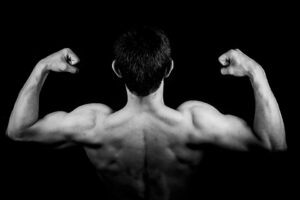Muscle Mechanics: The Intricate Dance of Motion and Strength
Introduction
Muscle mechanics plays a vital role in our daily lives, from the simple act of walking to the complex movements involved in sports. Understanding how muscles operate is key not only for athletes but also for anyone interested in health, fitness, and biomechanics. This article delves into the intricacies of muscle mechanics, exploring the principles of muscle function, types of muscle fibers, the role of the nervous system, and the applications of this knowledge in health and athletic performance.
Understanding Muscle Structure
The Anatomy of Muscle Tissue
Muscle tissue is primarily composed of specialized cells known as muscle fibers. These fibers are capable of contracting and generating force. There are three primary types of muscle tissues:
-
Skeletal Muscle: This type is under voluntary control and is responsible for movement and posture. Skeletal muscles are striated, meaning they have a banded appearance due to the arrangement of myofibrils.
-
Cardiac Muscle: Found only in the heart, this involuntary muscle contracts rhythmically to pump blood. Cardiac muscle fibers are also striated and connected by intercalated discs, which facilitate synchronized contractions.
-
Smooth Muscle: Found in the walls of hollow organs (like the intestines and blood vessels), smooth muscle is involuntary and non-striated. It plays a crucial role in functions like digestion and regulating blood flow.
Muscle Fibers and Their Types
Skeletal muscle fibers can be classified into two main types based on their contraction speed and endurance:
-
Type I Fibers (Slow-Twitch): These fibers are fatigue-resistant and suited for endurance activities. They rely on aerobic metabolism to produce energy and contain a higher density of mitochondria, which are crucial for energy production.
-
Type II Fibers (Fast-Twitch): These fibers contract quickly and provide short bursts of strength and power. They can be further divided into Type IIa (fast oxidative) and Type IIb (fast glycolytic), where Type IIa fibers can utilize both aerobic and anaerobic metabolism, while Type IIb fibers primarily depend on anaerobic metabolism.
The Role of Tendons
Muscles are anchored to bones through tendons, which are fibrous connective tissues that transmit the force generated by muscle contractions to the skeleton, resulting in movement. This connection is crucial for the efficient functioning of the musculoskeletal system.
The Mechanical Properties of Muscle
Force Generation
Muscles generate force through a process called contraction, involving the interaction between actin and myosin filaments within muscle fibers. When a muscle contracts, it shortens and generates tension, which can be measured as force. The primary mechanisms for force generation include:
-
Active Tension: This is produced when muscle fibers contract, leading to the development of force.
-
Passive Tension: This results from the elasticity of muscle fibers and connective tissue when they are stretched.
Length-Tension Relationship
The force that a muscle can generate is influenced by its length. The length-tension relationship indicates that muscles produce maximal force when they are at optimal lengths, where actin and myosin filaments are perfectly aligned for interaction. If a muscle is too stretched or too contracted, its ability to generate force diminishes.
Force-Velocity Relationship
The force-velocity relationship describes how the speed of muscle contraction affects the force produced. When a muscle contracts concentrically (shortening), it generates more force at slower speeds. Conversely, during eccentric contractions (lengthening), muscles can produce greater forces than during concentric contractions. This relationship is crucial for understanding athletic performance and rehabilitative strategies.
Muscle Contraction Mechanics
The Sliding Filament Theory
The sliding filament theory explains how muscles contract at the molecular level. In this model, muscle contraction occurs when myosin heads attach to actin filaments, forming cross-bridges. The following steps outline the process:
-
Cross-Bridge Formation: Myosin heads bind to actin filaments, forming cross-bridges.
-
Power Stroke: Once attached, myosin heads pivot, pulling the actin filaments closer together.
-
Cross-Bridge Detachment: ATP binds to the myosin head, causing the release from the actin filament.
-
Reactivation: The ATP is hydrolyzed, re-cocking the myosin head for another cycle.
Muscle Fiber Recruitment
The process of muscle fiber recruitment dictates how many fibers are activated during a contraction. This recruitment follows the Size Principle, where smaller, less powerful motor units (comprised of Type I fibers) are activated first, followed by larger motor units (Type II fibers) as the demand for force increases. This gradual increase helps optimize energy use and maintains fine motor control.
The Nervous System and Muscle Activation
The Role of Motor Neurons
Motor neurons are responsible for transmitting signals from the central nervous system to the muscle fibers. When a motor neuron fires, it releases neurotransmitters at the neuromuscular junction, stimulating muscle contraction. The frequency of these signals affects the strength of the contraction, known as summation.
Proprioception and Feedback
Proprioceptors, such as muscle spindles and Golgi tendon organs, provide vital feedback to the nervous system about muscle stretch and tension. This information allows for adjustments in muscle activation to maintain balance and proper movement, highlighting the interconnectedness of the muscular and nervous systems in facilitating complex motor tasks.
Applications in Health and Athletic Performance
Strength Training Adaptations
Strength training leads to several adaptations within muscle mechanics:
-
Hypertrophy: Resistance training induces an increase in muscle size, primarily through muscle fiber hypertrophy, wherein muscle fibers increase in diameter.
-
Neural Adaptations: Early strength gains are often attributed to neural adaptations, where the nervous system becomes more efficient at recruiting muscle fibers.
-
Improved Force Production: Training can enhance the length-tension and force-velocity relationships, resulting in greater force production capabilities.
Rehabilitation
Understanding muscle mechanics is crucial in rehabilitation settings. Specific exercises are designed to target muscle imbalances and strengthen weak areas while ensuring the integrity of joints and surrounding tissues. Utilizing knowledge of muscle function can help prevent re-injury and facilitate recovery.
Sports Performance
Athletes can apply insights from muscle mechanics to improve performance. Techniques such as plyometrics emphasize the stretch-shortening cycle, utilizing the elastic properties of muscle-tendon units to enhance power output. Moreover, proper biomechanics can minimize fatigue and optimize energy expenditure during performance.
Conclusion
Muscle mechanics is a fascinating and complex field that encompasses the structural and functional aspects of muscle tissue, the intricate processes of muscle contraction, and the essential role of the nervous system. Understanding these principles not only enhances athletic performance but also informs health and fitness practices. By appreciating the intricate dance of motion and strength, we can unlock the potential of our musculoskeletal system for improved movement and a better quality of life.
References
-
Hughson, R. L., & Friesen, E. W. (2003). Biomechanics of Human Movement. New York: Springer.
-
Blazevich, A. J. (2010). Sports Biomechanics: The Basics. New York: Routledge.
-
Enoka, R. M., & Duchateau, J. (2016). Muscle Control: The Key to Sports Performance. Journal of Applied Physiology, 121(1), 552-561.
-
Dumont, G. A., & Hoh, K. W. (2015). The Role of Muscle Mechanics in Sports Science. Sports Medicine, 45(6), 821-837.
-
Komi, P. V. (2011). Biomechanics and Physiology of Human Muscle Performance. Wiesbaden: Springer-Verlag.
-
Fitzgerald, L. (2018). Principles of Exercise Biomechanics. Journal of Sport Rehabilitative Science, 27(3), 156-160.


























Add Comment